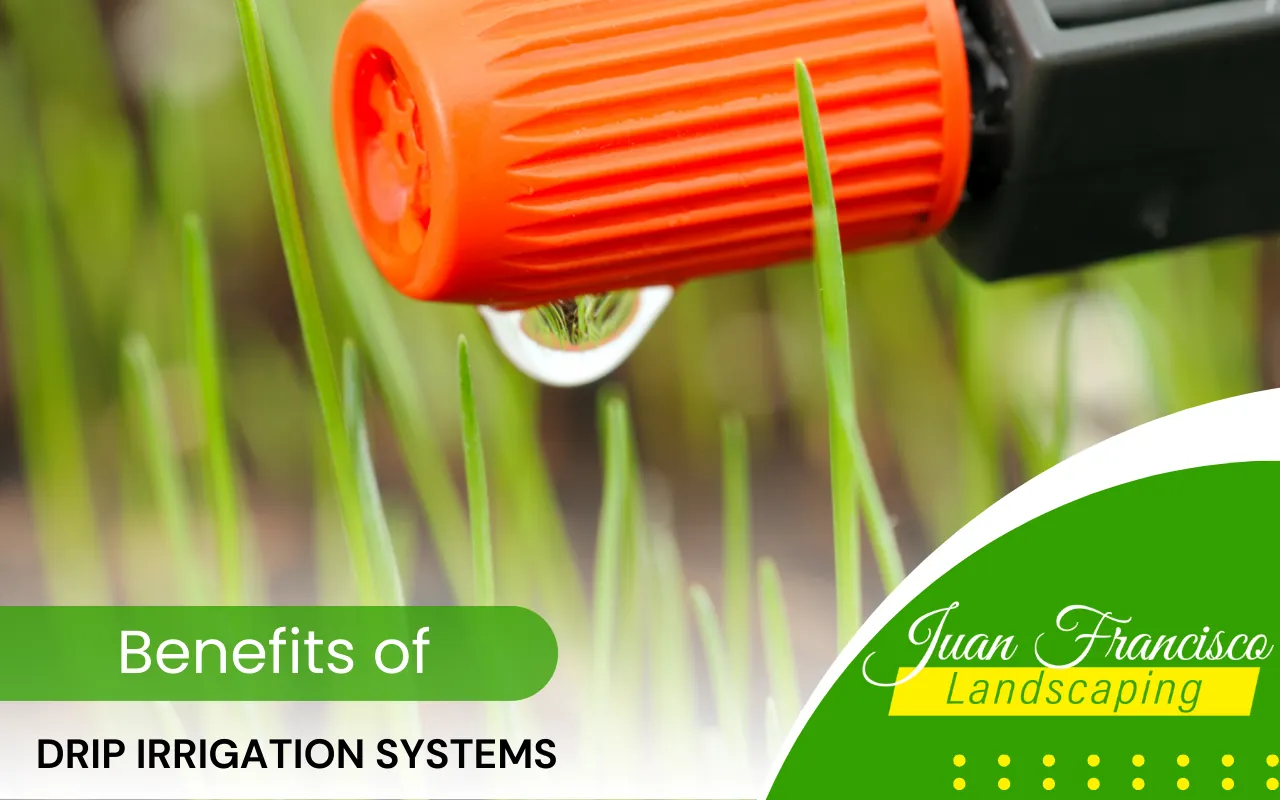
Drip Irrigation Benefits: A Smart Solution for Your Garden
Keeping plants healthy while reducing water waste can be a challenge. However, understanding drip irrigation benefits can help solve this issue. This method provides a more efficient way to water plants while saving time and money. Unlike traditional sprinklers, drip irrigation delivers water directly to the roots. As a result, plants receive the right amount of moisture without waste. This system offers practical solutions whether you want to improve your home garden or maintain a commercial landscape. This guide explores how drip irrigation benefits your landscape and why it may be the right choice for you.
Drip Irrigation Benefits for an Efficient Landscape
Saves Water and Reduces Waste
Water is a valuable resource, so using it wisely is essential. Drip irrigation is designed to minimize waste and maximize efficiency.
- Water is delivered directly to plant roots, reducing evaporation.
- Unlike sprinklers, there is no runoff, so every drop is used effectively.
- Studies show drip irrigation can save up to 50% more water than traditional methods.
By switching to a drip system, you can lower water bills while keeping your plants hydrated.
Promotes Healthier Plants
Overwatering or underwatering can damage plants. Drip irrigation provides a steady supply of moisture, allowing them to thrive.
- Roots absorb water more efficiently, leading to stronger and deeper growth.
- Water stays near the soil, reducing the risk of fungal diseases.
- Each plant gets the exact amount of water it needs, improving overall health.
With a consistent and controlled watering system, your garden or landscape will look lush and vibrant.
Prevents Weeds and Soil Erosion
Traditional sprinklers water everything in their path, including weeds. This leads to unwanted plant growth and wasted resources.
- Drip irrigation waters only the plant roots, preventing excess moisture in surrounding areas.
- Less water on the surface means fewer weeds competing for nutrients.
- Since water drips slowly into the soil, erosion is reduced, keeping your landscape intact.
By limiting unnecessary watering, you improve soil quality and prevent weed overgrowth.
Saves Time and Reduces Maintenance
Watering by hand or adjusting sprinklers takes time. Drip irrigation automates the process so you can focus on other tasks.
- Programmable timers allow watering even when you’re not home.
- There’s no need to move hoses or adjust sprinkler heads.
- The system requires minimal maintenance once installed.
With less effort needed for watering, you can enjoy a beautiful yard without the hassle.
Ideal for Various Landscapes
Drip irrigation is a versatile solution that works well in different settings. It provides even water distribution whether you have a home garden, commercial property, or sloped terrain.
- Vegetable gardens thrive with steady moisture control.
- Flower beds stay healthy with targeted watering.
- Commercial properties benefit from consistent, low-maintenance landscaping.
Regardless of the space, this system adapts to your needs.
Eco-Friendly and Sustainable
Using less water is not only cost-effective but also better for the environment. Drip irrigation supports sustainable landscaping with eco-friendly benefits.
- Reduces water consumption in drought-prone areas.
- Lowers the use of chemical runoff and fertilizers in nearby water sources.
- Supports soil health by preventing overwatering and erosion.
With this system, you make a responsible choice for both your landscape and the environment.
How Drip Irrigation Works
Understanding the System
Drip irrigation works by slowly releasing water near plant roots. Unlike overhead sprinklers, it ensures deep soil penetration without surface waste.
- A network of tubing distributes water directly to plants.
- Small emitters control the amount of water each plant receives.
- The system can be customized for different soil types and plant needs.
This precise watering method prevents excess runoff and promotes better absorption.
Components of a Drip Irrigation System
A drip irrigation system includes several key components:
- Mainline tubing – Delivers water throughout the system.
- Emitters – Control the water flow to individual plants.
- Filters – Prevent clogging from dirt and debris.
- Timers and controllers – Automate the watering schedule.
Each component plays a role in keeping the system efficient and reliable.
Installation and Setup
Installing a drip irrigation system is straightforward. However, proper setup ensures maximum efficiency.
- Plan where each tube and emitter will go for even coverage.
- Bury or place tubes beneath mulch to retain moisture.
- Check the water pressure to prevent leaks or weak flow.
Once installed, the system requires little maintenance to keep plants thriving.
FAQs About Drip Irrigation Benefits
Is drip irrigation cost-effective? Yes. It lowers water bills and requires minimal upkeep, making it a smart investment for long-term savings. Can drip irrigation work for large properties? Absolutely. The system can be customized for residential, commercial, or agricultural use. Does it work with all types of plants? Yes. It can be adjusted to support vegetables, flowers, shrubs, and trees.
How long does a drip irrigation system last?
With proper care, it can last 10 years or more, offering reliable performance.
Enhance Your Landscape with an Efficient Drip Irrigation System
Choosing drip irrigation benefits your landscape by saving water, reducing maintenance, and promoting plant health. If you’re looking for a sustainable and cost-effective irrigation solution, a drip irrigation system is a smart investment. Contact us today for a free estimate from an insured company with over 13 years of experience in Knoxville, TN. Let’s help you create an efficient, beautiful outdoor space.
